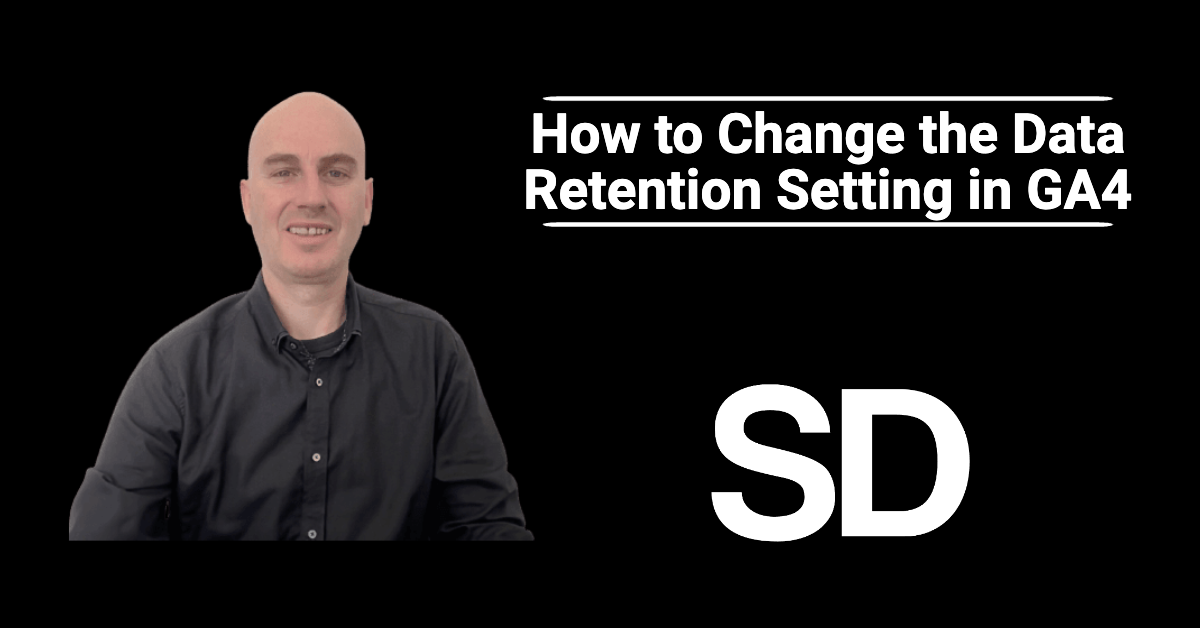Data retention is a critical aspect of data management, especially in today’s data privacy landscape. By adjusting the data retention setting in Google Analytics 4 (GA4), you can align data storage with your specific business requirements and comply with relevant data privacy regulations.
In this tutorial, I’ll show you how to change the data retention setting in GA4, giving you the flexibility to manage your data in a way that suits your needs.
Header Outline:
- I. Introduction
- II. Understanding Data Retention in Google Analytics 4
- III. Changing the Data Retention Setting
- IV. Considerations and Best Practices
- V. Conclusion
I. Introduction
As a website owner or marketer, it’s essential to manage user data responsibly and comply with privacy regulations. Google Analytics 4 (GA4) offers the ability to adjust data retention settings, allowing you to control how long your user data is stored within the platform.
In this guide, we’ll walk you through the process of changing the data retention setting in GA4, enabling you to make informed decisions about data management and privacy compliance.
II. Understanding Data Retention in Google Analytics 4
Data retention refers to the duration for which GA4 retains user data before automatically deleting it. By default, GA4 retains user data for two months. However, you have the flexibility to adjust this period based on your data needs and privacy policies.
Changing the data retention setting can impact your ability to analyse historical data, so it’s essential to consider your reporting requirements before making changes.
III. Changing the Data Retention Setting
A. Accessing the GA4 Property Settings
To change the data retention setting, follow these steps:
- Sign in to your Google Analytics account and navigate to your GA4 property.
- Click on “Admin” in the bottom-left corner of the page.
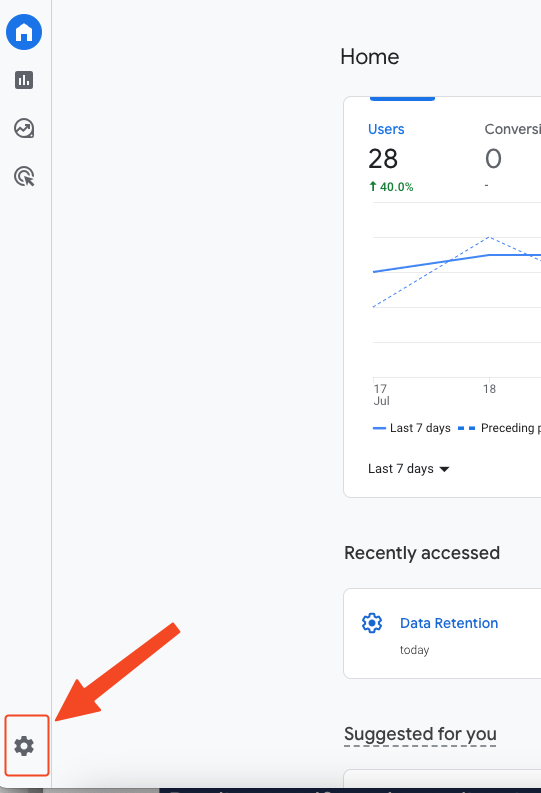
B. Navigating to Data Settings
In the “Property” column, click on “Data Settings” and then “Data Retention”. This will take you to the data settings page for your GA4 property.
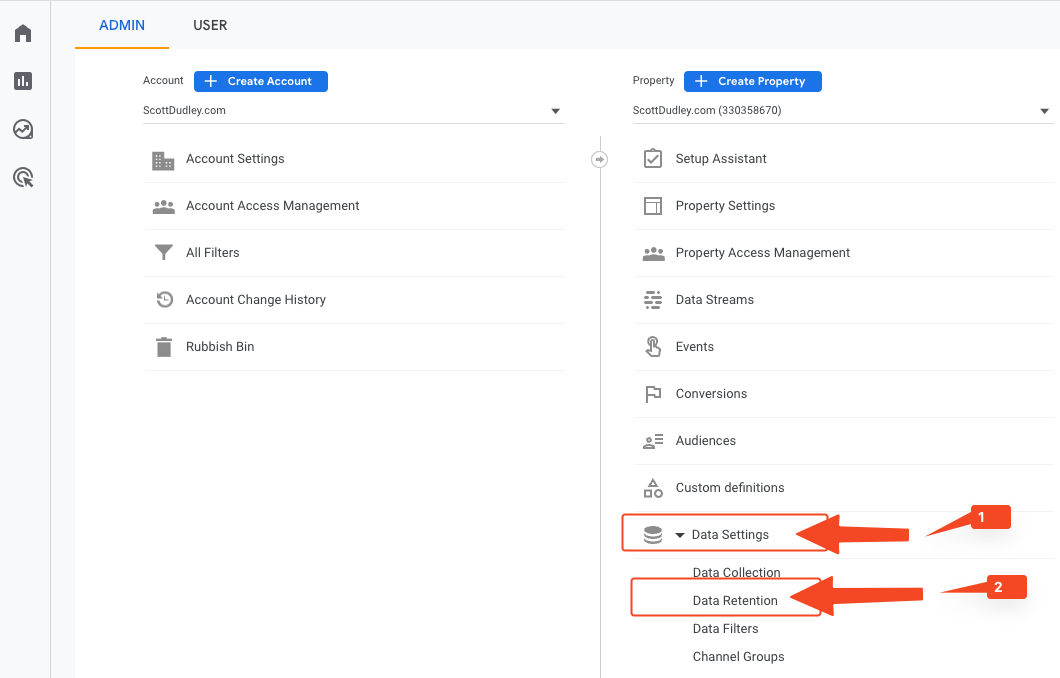
C. Modifying the Data Retention Period
Scroll down to the “Data Retention” section. Here, you’ll see the current data retention period, which is set to the default two months. Click on the drop-down menu to select a new data retention period from the available options: 2 months or 14 months.
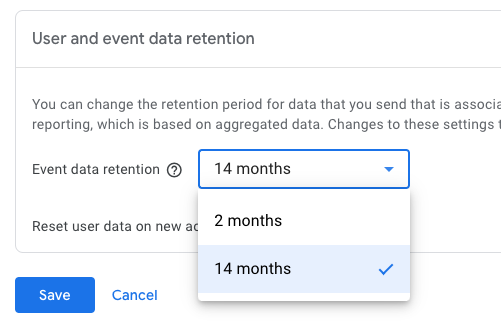
D. Reset user data on new activity
Lastly, select the toggle switch underneath if you wish to reset user data on new activity.
Turn this option ON to reset the retention period of the user identifier with each new event from that user (thus setting the expiration date to current time plus retention period).
If you do not want the retention period for a user identifier reset based on that user’s activity, turn this option OFF. Data associated with the user identifier will be deleted automatically after the retention period.
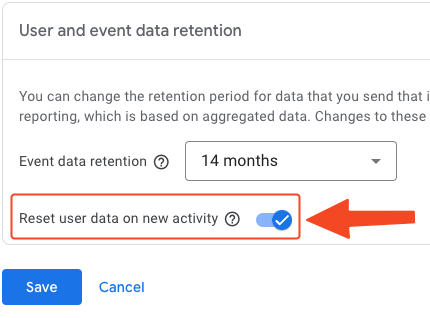
E. Confirming the Changes
After selecting the desired data retention period, carefully review your choice. Click on the “Save” button to confirm and apply the new data retention setting.
IV. Considerations and Best Practices
Before changing the data retention setting in GA4, consider the following best practices:
- Evaluate your data analysis needs and regulatory requirements when selecting the data retention period.
- Keep in mind that reducing the data retention period may limit historical data availability for analysis.
- Regularly review and update your data retention settings based on changing privacy policies and business needs.
V. Conclusion
Changing the data retention setting in Google Analytics 4 provides you with greater control over your user data and ensures compliance with privacy regulations. Follow the steps outlined in this guide to modify the data retention period for your GA4 property effectively.
Make informed decisions about data management to optimise your analytics insights while respecting user privacy.
